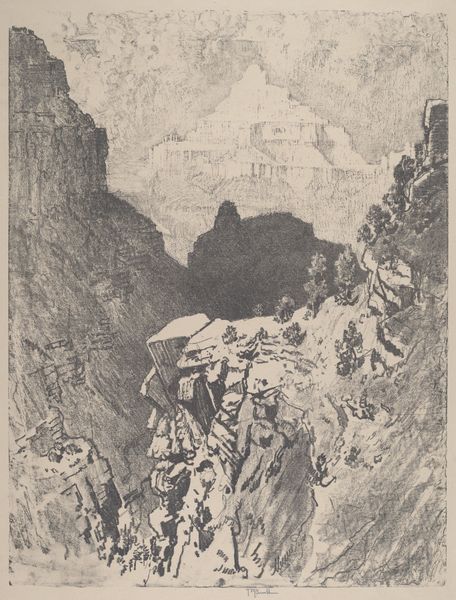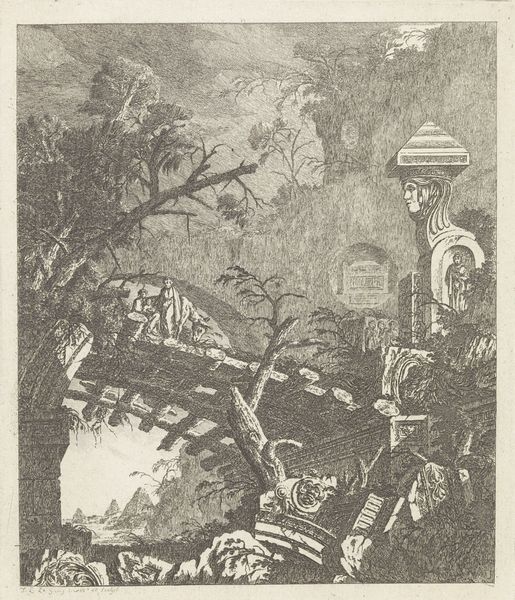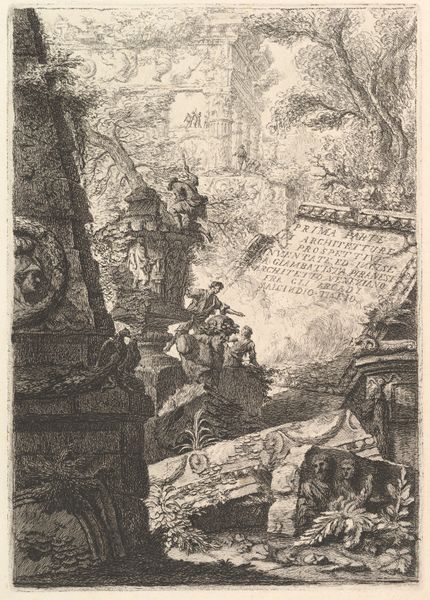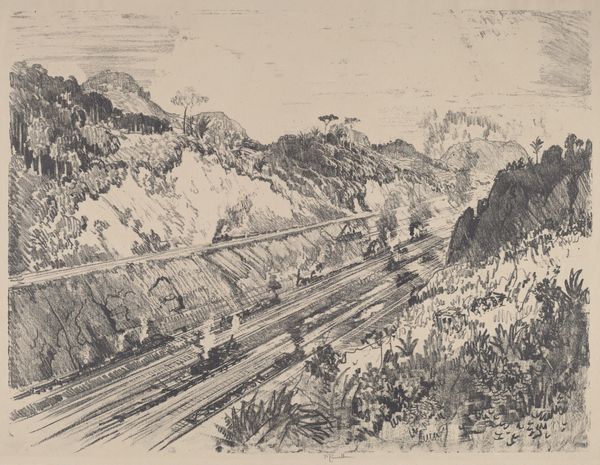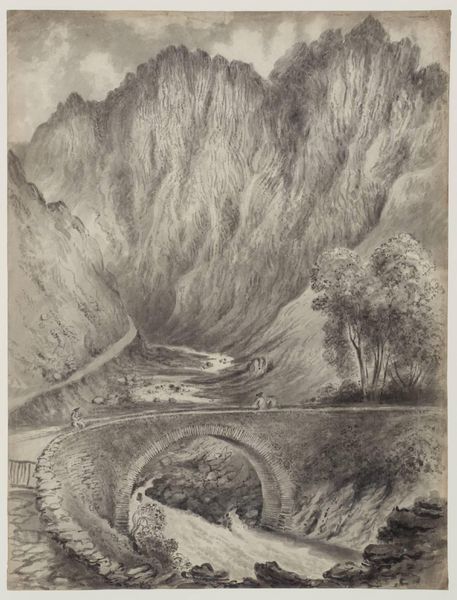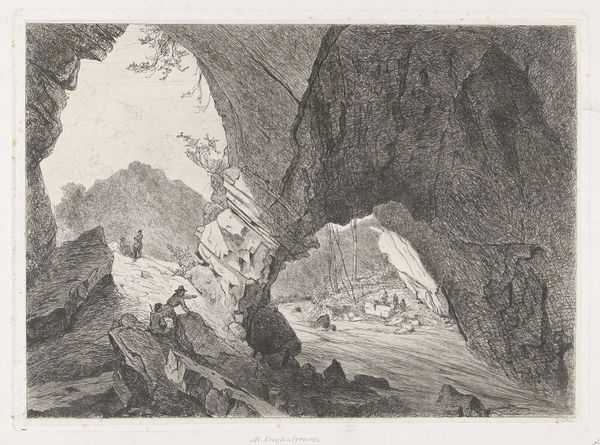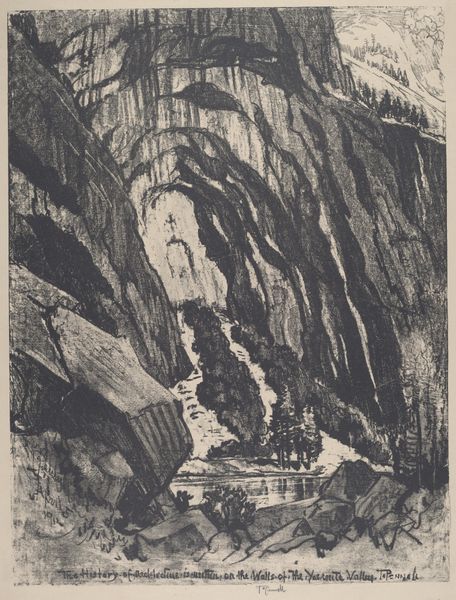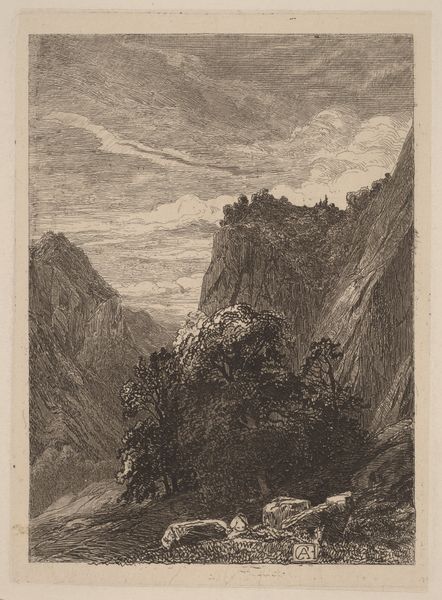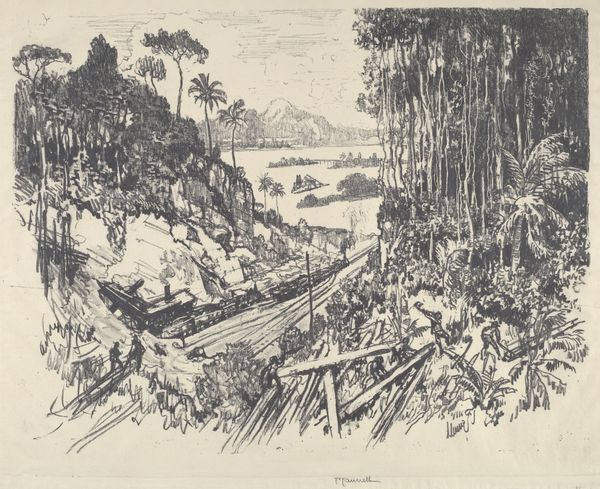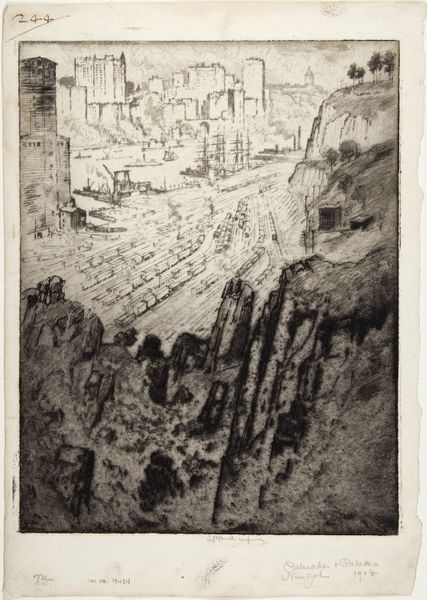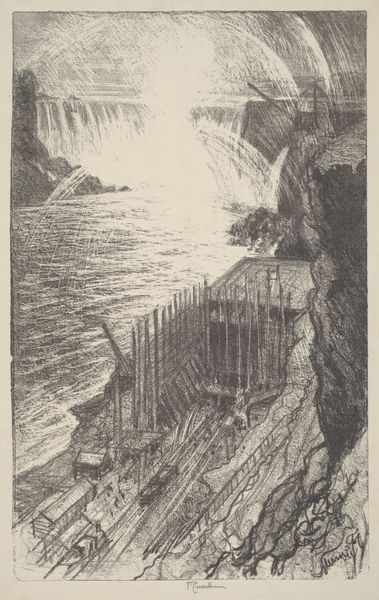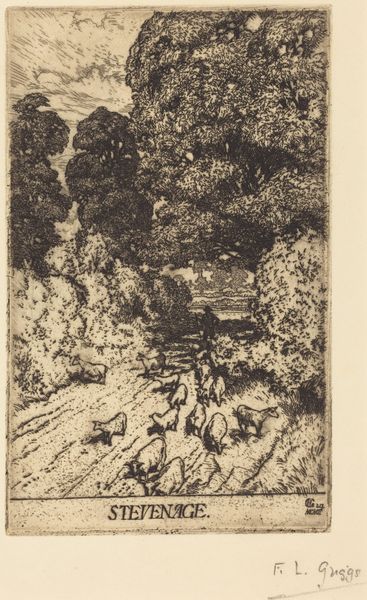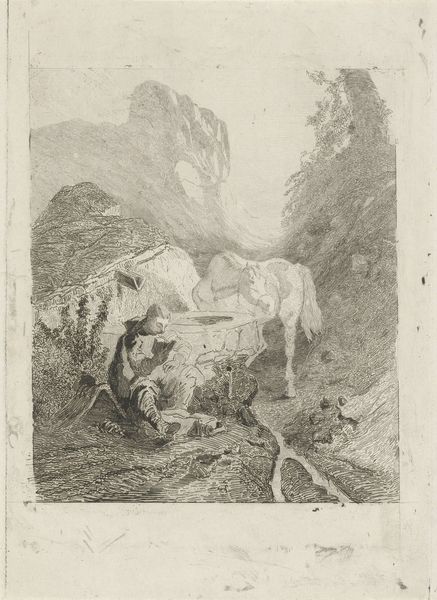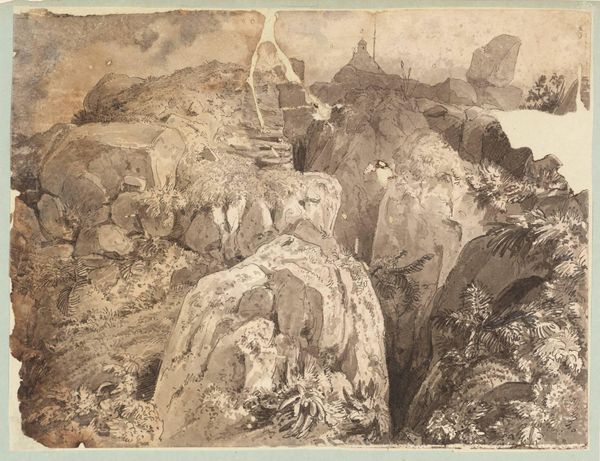
print, etching
#
pencil drawn
# print
#
etching
#
pencil sketch
#
landscape
#
pencil drawing
#
cityscape
#
modernism
#
realism
Copyright: National Gallery of Art: CC0 1.0
Curator: We're looking now at "The Cut from Culebra," a 1912 etching by Joseph Pennell. The print plunges us into the heart of the Panama Canal construction. Editor: Woah. It's dramatic! The way the train tracks snake into that shadowy gorge – feels like descending into some sort of… industrial underworld. A bit menacing, I think. Curator: The industrial is certainly emphasized, recalling imagery of factories billowing with smoke or hellmouths, the entrances to the underworld, spewing forth sinners. Pennell often depicted modern marvels like this; he found a certain beauty in engineering and industry. He saw the Panama Canal, especially, as this grand emblem of human triumph. Editor: Triumph, huh? Looking at it, I also sense a deep disruption. Those churned-up landscapes, the clouds of smoke... I can’t help but wonder what the human cost was, the environmental toll of carving out a canal. You feel this in his image— a bit of grit, a bit of disturbance, a sense of the ground itself being violated. Curator: That reading is supported when considering the history and the landscape being changed: Culebra Cut (now Gaillard Cut) was one of the most challenging parts of the canal’s construction, notorious for landslides and unstable earth. The site becomes an enormous scar cut into the earth, requiring massive effort, not only due to unstable rock, but because the earth and rock are alive with indigenous presences and other geological, cultural, and social dimensions. The smoke and the disruption, read together, become symbols of human and ecological disruption. Editor: Absolutely. It's a visual paradox. Pennell seems awestruck by the scale of the project, yet he doesn’t shy away from revealing its darker, more troubling aspects. Curator: Precisely. By choosing etching, he embraces the idea of something both built, but with a sort of violence. Acid eats at the plate like a blade or shovel digs at the earth. It creates the idea of inscription, indelibly changed with new intention. He captured both the ambition and the upheaval, permanently altering a landscape and perhaps our very notions of progress. Editor: It's a testament to the power of art. To hold both the light and the shadow in a single image, prompting us to contemplate not just what we achieve, but how—and at what expense. Curator: Indeed. Thank you for allowing new meanings to be found in an artwork more than a century old. Editor: The pleasure was all mine, allowing new appreciation to an older print.
Comments
No comments
Be the first to comment and join the conversation on the ultimate creative platform.
